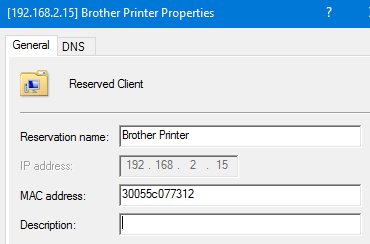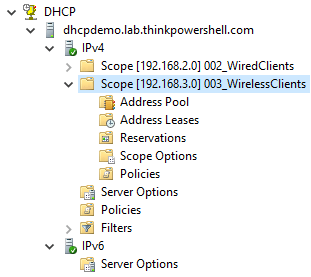
Need to mix the convenience of DHCP with the consistency of a static IP? Use a DHCP reservation, and create them with PowerShell.
DHCP reservations explained
DHCP empowers us to automatically assign IP addresses to clients while adhering to standardized rules (address space, lease duration, DNS servers, etc). For most clients, we typically don’t care what IP address the client ends up with on any given day, but for other devices consistently connected to the network, there are benefits to having the device get the same IP every time. A prime example that everyone can relate to is a printer. If you have the printer shared through a print server, the print server needs to be able to consistently talk to the printer on a known IP address.
“A DHCP reservation is a permanent IP address assignment. It is a specific IP address within a DHCP scope that is permanently reserved for leased use to a specific DHCP client” (tech-faq.com).
In the previous post we created DHCP scopes. Let’s see how we can use PowerShell to create a DHCP reservation within one of those scopes.
[Read more…] about Configuring Windows DHCP, Part 3: Creating DHCP Reservations


